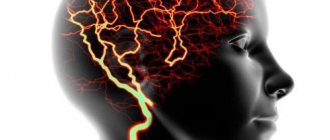Narcissistic personality disorder is a character trait that is expressed in excessive narcissism, as well as inflated self-esteem. A patient with narcissism elevates himself above others. In the vast majority of cases, narcissism and inflated self-esteem are not true.
Until recently, there was no such thing as NRL. Today, the disease has reached colossal proportions. This is all due to errors in upbringing, the presence of mental disorders, permissiveness, and the influence of social networks. A person with a highly inflated ego requires the help of a specialist.
Development and direction
Narcissistic traits may be especially common in adolescents and do not necessarily indicate that a person will have narcissistic personality disorder. Individuals with narcissistic personality disorder may have particular difficulty adapting to the physical and occupational limitations that come with aging.
Of those diagnosed with narcissistic personality disorder, 50%-75% are men
Causes of narcissism
Both genetic and biological factors, as well as environmental factors and a person's early life experiences, play a role in the development of this disorder.
People with narcissistic personality disorder have been shown to have lower gray matter volume in the left anterior insula, an area of the brain associated with empathy, emotion regulation, compassion, and cognitive functioning.
Here are some examples of destructive social conditions that can affect these stages of development:
- Hypersensitive temperament.
- Teaching manipulative behavior using the example of parents or peers.
- When a child is overly praised for good behavior and overly criticized for bad behavior. Find out how to praise your child to boost his self-esteem.
- Violence experienced in childhood.
- Inconsistent parenting (unpredictable and unreliable).
- Permissiveness.
- Excessive admiration for a child without taking into account the real state of affairs.
Symptoms of Narcissistic Personality Disorder
According to the American Psychiatric Association, a person may have narcissistic personality disorder if they have at least 5 of the following 9 symptoms:
- Exaggerated sense of self-importance.
- Fantasies about unlimited success, power, ideals, beauty, etc.
- Confidence in one's own specialness and uniqueness, superiority over others.
- The need for constant attention and admiration from others.
- Exaggerated sense of self-worth.
- Exploitative behavior (using other people to achieve one's own goals).
- Lack of empathy and compassion.
- Envy of others and/or the belief that everyone is envious of oneself.
- Demonstration of an arrogant attitude towards others, looking down on them.
“Narcissists” are unable to build harmonious relationships in the family, since they need both their partner and children only to reflect themselves, i.e., they perform the function of a mirror.
Pathogenesis
The concept of narcissism comes from Greek mythology. The legend about a young man named Narcissus, a symbol of pride and narcissism, tells how he saw his reflection in a source and fell in love with it so much that he experienced the pangs of love, could neither eat nor drink, and died in suffering, but on the spot After his death, a beautiful flower, Narcissus, grew.
Plant of the amaryllis family Narcissus lat. Narcissus
In general, people prone to narcissism are characterized by pride and selfishness, a tendency toward perfectionism, and a focus on personal individuality and grandeur. Their main task is to acquire status attributes, organize and maintain personal significance, self-esteem and admiration by receiving confirmation from others. Such individuals are not just sensitive to remarks or praise, they are preoccupied with how others treat them, experience anxiety and deep inner feelings caused by unreasonable feelings of deception and lack of love. Despite the first favorable impression, it is not possible to maintain long-term strong ties.
The locus of control of narcissists is usually self-esteem, and the experience that this is beyond his control causes the level of anxiety to increase and provokes a further increase in symptoms. For such patients, it is very important to surround yourself with people who know how to support him, feed his significance, while other aspects of relationships and especially the ability to love seem unimportant, not significant and not necessary. Despite their high need for an admiring audience and an adoring environment, narcissists feel only superficial feelings of love for them. Jealousy is also unfamiliar to them; it can arise only after a breakup, when the patient, losing his partner, loses the mirror that serves as his reflection.
The narcissistic personality is characterized by a devaluation of almost everything in the world; only that which is associated exclusively with his “I” can be idealized, and the concept of the “ideal I” is not fully developed and the idea of the “super-I” is completely absent. They have a negative, disdainful attitude towards any non-ideal objects, and enthusiastic feelings towards everything important that concerns the narcissist’s personality. There is a tendency to a diametric change in perception; everything that seemed ideal can suddenly become insignificant.
Narcissism as sexual deviation
Initially, when the term “narcissism” was introduced into sexology (it was used by Krafft-Ebing, one of the founders of clinical sexology), it meant a pathological tendency to masturbate, receiving pleasure from contemplating oneself in the mirror. Freud, of course, knew these works and, when he introduced his concept of narcissism, drew information from there. But for Freud this is a broader, more personal phenomenon. As we now understand, he was right. For sexologists of the 19th and early 20th centuries, narcissism was a narrow concept associated only with the satisfaction of sexual needs. This is a fairly rare form of sexual deviance, and its connection with narcissistic personality disorder is not obvious.
Story
The term "narcissism" comes from the classic Greek myth of Narcissus, a young man who fell in love with his reflection in water. His fate was such that he died out of unsatisfied desire and turned into a daffodil flower. The first reference to this myth in the psychological literature came from Havelock Ellis (1898), who described the masturbatory, or “autoerotic,” practice of one young man.
Freud subsequently included the term “narcissistic” in his early theoretical essays on psychosexual development (Freud, 1905/1953) and later developed ideas about narcissism as a distinct psychological process (Freud, 1914/1957). He interpreted narcissism as a stage of normal development that follows the autoerotic stage and ultimately develops into object love. Fickle, unreliable caregivers at an early age or parents who value their child too much were seen as the main obstacles to the development of object love, becoming the cause of fixation at the narcissistic stage of development. Narcissistic individuals were considered incapable of forming long-term attachments due to fixation at the stage of self-infatuation.
Subsequently, psychoanalytic theorists focused on the interpersonal aspects of narcissism, and the concept of the “narcissistic personality” began to emerge (e.g., Waelder, 1925). Akhtar & Thomson (1982) point to controversy regarding whether narcissism is a component of neurosis, psychosis, or character disorder. In the research of the current generation of object relations theorists, narcissism is viewed as a personality or character disorder. Notable among them are the works of Kernberg (1967, 1970) and Kohut (1966, 1971).
Thus, the theme of self-love and self-involvement has evolved from an explanation of masturbation to a description of a wide range of character disorders, united under the name “narcissism.” The psychoanalytic literature on narcissism describes in detail the phenomenology of this disorder. But the psychoanalytic theory of the etiology of narcissism is obviously limited by overemphasis on the supposed inadequacy of the mother's emotional reactions.
Diagnostics
Narcissistic disorder is diagnosed when at least 5 of the following are present:
- an inflated sense of self-worth, exaggeration of achievements and talents, expectation of unconditional recognition of one’s superiority without facts proving it;
- fixation and cultivation of ideas about success on a universal scale, world power, unimaginable intelligence and beauty, ideal love;
- conviction of one’s own uniqueness, exclusivity, the ability to be understood and accepted only by special people;
- the need for respect and admiration from others;
- an unfounded idea of one’s right to a privileged, preferential position and automatic satisfaction of desires;
- manipulation and use of other people for one’s own purposes;
- lack of empathy, ignoring the needs and interests of other people;
- arrogant and arrogant behavior.
Is it necessary to treat
Narcissistic personality disorder is not a disease and the concept of treatment in the standard sense cannot be applied to it. However, it can cause other mental disorders: depression, anxiety, obsessive-compulsive disorder, and even lead to suicide. The inability to build a harmonious relationship with a loved one dooms a person to loneliness. Therefore, a person with NPD definitely needs the help of a specialist who knows how to treat narcissistic personality disorder.
Classification
Depending on the predominant manifestations of the clinical picture, the following types of narcissistic personality are distinguished:
- paranoid - any contradiction to the grandiose plans of narcissists, disagreement with their superiority can provoke suspicion, intense anger and aggressive reactions;
- hypochondriacal – manifests itself to a greater extent in the form of self-interest and focus on protecting one’s health, which ultimately ensures the attention, delight or empathy of others;
- phobic - the development of social phobias is a response to hypersensitivity to the opinions of others and potentially possible negative feedback; the development of fears makes them more antisocial and causes anthropophobia .
Perverse narcissism
Quite recently, in 1987, Paul-Claude Racamier introduced the concept of narcissistic perversion, which essentially conveys a specific - “inverted” way of psychological defense of a person, when a person turns from an ideal into a tyrant. Such people tend to parasitize on their partners, demonstrating their virtues at the expense of others.
The perverted narcissist usually gives a pleasant impression, he is gallant and courteous, but in reality he is not. In fact, such persons are moral predators, they like to manipulate and subjugate individuals, and the stronger the character and more worthy the person, the more interested the pervert is.
Treatment for Narcissistic Personality Disorder
People with narcissistic personality disorder overwhelmingly deny the need for treatment. And in the case when they are satisfied with life: career advancement, satisfaction of their own ambitions, admiration from others - they really feel great.
Treatment for narcissistic personality disorder is individual. When choosing treatment methods, you should consider:
- General physical and mental condition of the patient.
- Desire to make contact.
- Patient's age.
- Social status.
- Presence of mental disorders.
One of the most successful and progressive methods of treating the disease is the psychoanalytic approach. The psychoanalytic approach allows us to identify pathological patterns at a young age.
Literature
- Kernberg, Otto. Aggression in Personality Disorders And Perversions. - M.: Klass, 2001. - 368 p. — (Library of psychology and psychotherapy). — 2000 copies. — ISBN 5-86375-103-7, ISBN 0-300-05003-8.
- Kernberg, Otto. Love relationships, norm and pathology = Love Relations. Normality and Pathology. - M.: Klass, 2006. - 256 p. — (Library of psychology and psychotherapy). — 2000 copies. — ISBN 5-86375-124-X, ISBN 0-300-06031-9.
- Kernberg, Otto. Severe personality disorders = Severe personality disorders. - M.: Class, 2000. - 464 p. — (Library of psychology and psychotherapy). — 2000 copies. — ISBN 5-86375-024-3, ISBN 0-300-05349-5.
- McWilliams, Nancy. Psychoanalytic diagnosis: Understanding personality structure in the clinical process = Psychoanalytic diagnosis: Understanding personality structure in the clinical process. - M.: Klass, 1998. - 480 p. — ISBN 5-86375-098-7.
- Sokolova, Elena Teodorovna. Psychology of narcissism: a textbook for students of the psychology department of universities in the direction 521000 - “Psychology” and specialty 022700 - “Clinical. psychology” / E. T. Sokolova, E. P. Chechelnitskaya. - M.: Educational and methodological collector "Psychology", 2001. - 89 p. — ISBN 5-93692-029-1.
Preventive measures
In order to prevent a mentally healthy child from growing into a future psychiatric patient, it is important to correctly assess his personality within the family. We must remember that he has the right to make mistakes, which need to be discussed with him, and not shouted about how wrong he is
Attention! No child's demand should be satisfied through tears. Only with the help of mutual understanding and respect in the family can one create a healthy psycho-emotional environment that promotes rational awareness of the individual in society
Related posts:
- Treatment of panic attacks: what is included in the course of treatment? Panic attack (PA) is an attack that develops in the shortest possible time...
- Features of schizophrenia: signs, symptoms and modern treatment methods According to the generally accepted definition, schizophrenia is a mental disorder in which a person…
- Panic disorder in men Panic disorder is a common mental illness that is based on...
- Phobias Let's consider a very important problem of modern society. Due to a difficult lifestyle...










